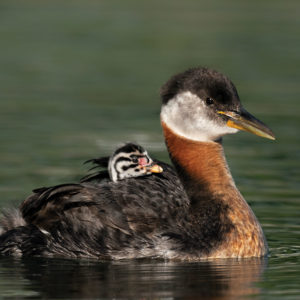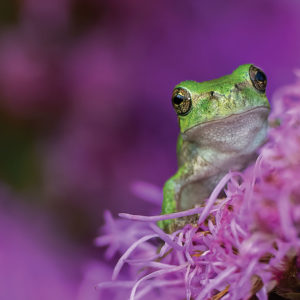Love at First Dance: Meet the American Avocet
Nature Canada’s calendar image (and our 2020 calendar cover) for May is a good reminder that we can always look at the bright side of things during these challenging times. This month’s photo, taken by Kinan Echtay, shows two American avocets performing a mating dance—a well-timed demonstration that dancing is always a healthy mood booster! Below are a few facts that you may not know about this species.
Don’t Let the Name Fool You
Just because they’re called American avocets doesn’t mean you can’t find them in Canada. While most of the American avocet population is in the United States, you can also find these beautiful birds in Canada. They breed in Canada’s Prairie provinces and migrate to the southern United States and parts of Mexico during the winter. American avocets live in freshwater and breed in the isolated wetlands of the dry western provinces.
Appearance-wise, American avocets are larger than most birds, measuring up to 50 centimetres in height, with a long neck, legs, and a turned-up black bill. In the summer their head and neck turn red and during the winter they change to a grayish-white colour to camouflage with the snow.
Small but Fierce
Though American avocets may be bigger than most birds, they still need to defend their nests from predators. Predators include common ravens, northern harriers, and skunks.
They use many different tactics to fight off these predators and protect their eggs. The most common tactic is for a group of adults to distract the predator by running towards them with their wings spread out. Another tactic avocets use to keep predators away is to pretend to incubate their eggs in multiple spots at once. If predators are targeting eggs or young ones, adult avocets fly directly at the predator and make loud noises. They will even physically-strike these other animals in order to protect their young!
Threats to American Avocets
Loss of wetlands has led to a decline in American avocet populations in recent years. Wetlands are a key habitat not only for this bird species, but also for many other varieties of Canadian wildlife.
Human development threatens wetlands, and these valuable ecosystems continue to shrink with the expansion of housing developments, business parks, and shopping malls. Up to 70 percent of Canada’s wetlands have already been destroyed. Wetlands provide hundreds of species with a safe habitat where they can live, eat, and reproduce.
Defending and restoring Canada’s wetlands will maintain an important habitat for American avocets and give the opportunity for hundreds of species to thrive.



